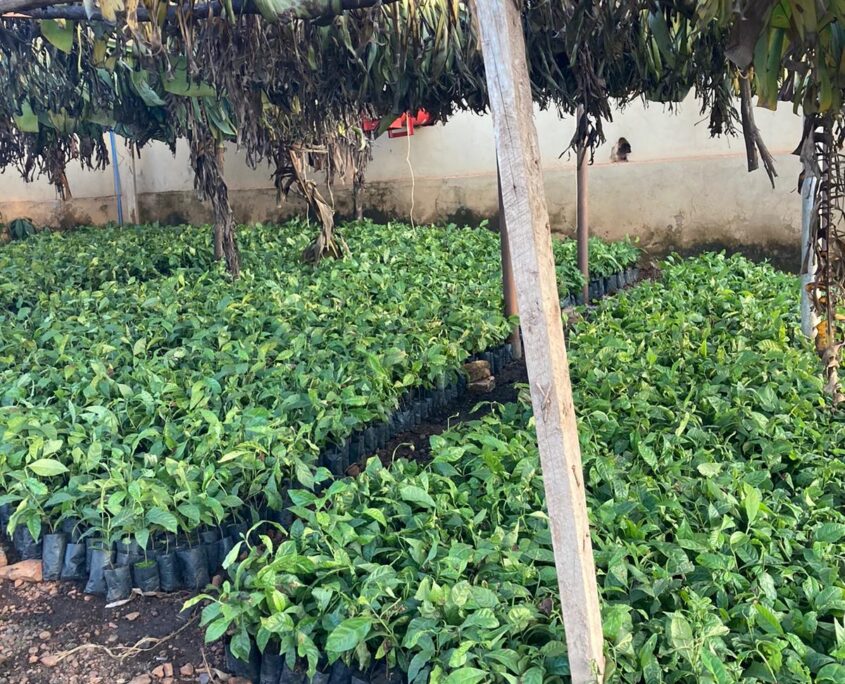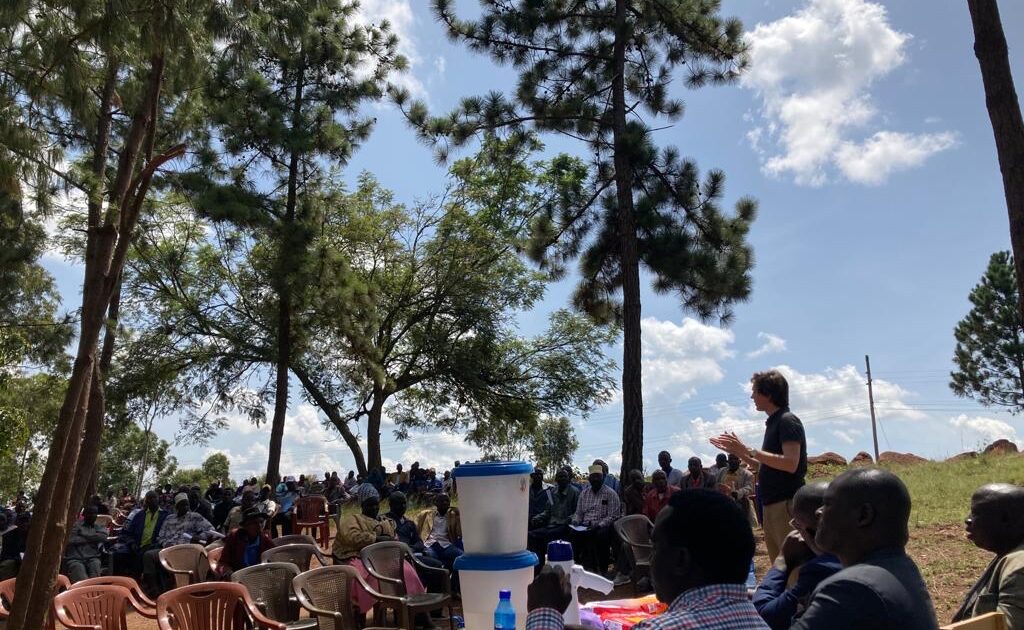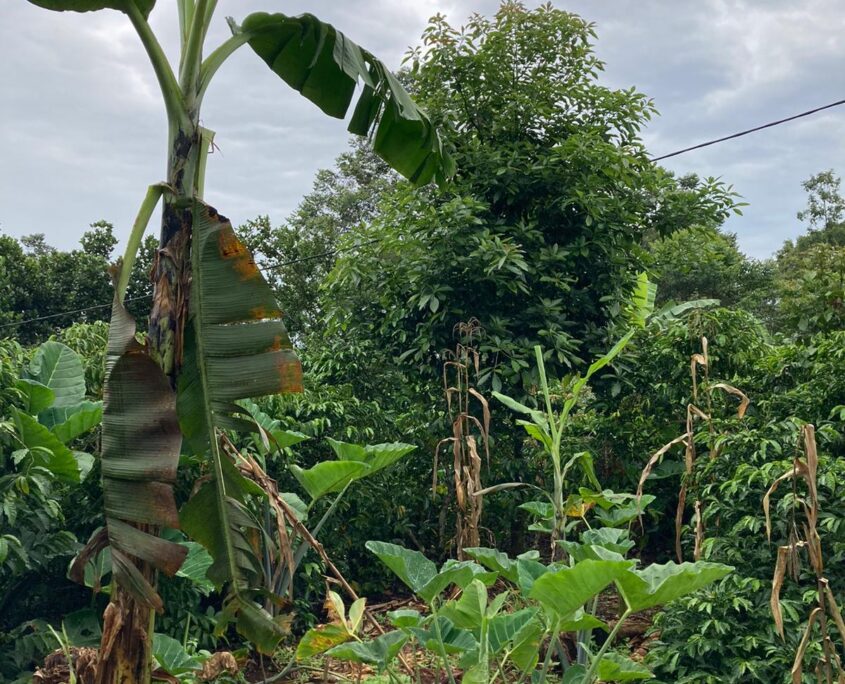May 06, 2022

The voluntary carbon market (“VCM”) offers companies and organizations striving to improve their carbon footprint a low-cost solution to achieve their emission reduction targets. After cutting CO₂ emissions wherever is possible, such a party can choose to offset them with an equivalent of CO₂ reduction, avoidance or removal elsewhere. This is called “carbon credit” and each credit stands for 1000 kg CO₂e.
As discussed in a previous blog post, Rabobank is developing a platform to unlock the voluntary carbon market for smallholder farmers in the Global South. The platform is called ACORN: Agroforestry Carbon Removal Units for the Organic Restoration of Nature. ACORN wants to provide a fully traceable, ex-post solution, meaning that the source of each Carbon Removal Unit (“CRU”) is linked to an existing piece of land with trees that have already removed carbon from the atmosphere.
“In the absence of quality regulations, pricing is considered the only quality indicator for CRUs.”
This approach is unique according to ACORN’s strategy lead Emma van de Ven. She points out that carbon offsetting projects usually sell their carbon credits ex-ante, before a single tree has been planted and way before the actual storage occurs, usually without providing any insight into the calculations applied. When asked how quality is measured in the carbon market, Van de Ven replied that pricing is considered a key quality indicator due to the absence of quality regulations and transparency. In terms of accounting, however, it currently does not matter whether one buys high or low-quality credits since they theoretically compensate for the same amount of carbon and thus represent the same value.
“As the price for a credit is fixed for each project without a market-based price, buyers are left with the idea that a good price equals to good quality, which perpetuates a total lack of transparency.”

Fig. 1: carbon offsetting trees in an ACORN plant nursery in Tanzania (Jelmer van de Mortel).
Certifiers of carbon credits maintain the status quo by approving CRUs with different quality standards. Van de Ven acknowledged that there is not much incentive for certifiers to discard lower quality credits in their current portfolio in favour of quality improvement. This would deprive them of revenue, but more importantly, of their credibility. Hence, how can the market be segmented to make transparency key and create incentives to purchase higher-priced credits?
Van de Ven argues that the only way to achieve a change in the status quo is to differentiate the quality of carbon credits. Besides the addition of the credit type (reduction, removal, avoidance), the accounting taxonomy (ex-ante or ex-post) and the credit origin (renewable energy, nature-based, etc.), another essential factor for this segmentation would be the specification of the number of additional benefits provided by the carbon offsetting project. A hydropower plant, for example, does not contribute to any SDGs in addition to its carbon benefits compared to e.g. coal-based electricity. At the same time, ACORN is said to contribute to five SDGs.
Credits with low or zero additional benefits need not be banned from the market. Take cut-price chicken, for example. They are pumped up with antibiotics, such as avoparcin, that speed up their growth, and water that increases their weight. “Yes, it’s cheaper, and it’s in the supermarket so you can eat it, but you cannot find a [healthy] justification for buying it all the times [you go shopping]”. If we had a “cut-price credit” that companies and organizations could not justify buying it all the time, they will “die out on their own (no offence to chicken)”.

Fig. 2: ACORN carbon offsetting meeting in Tanzania (Jelmer van de Mortel).
When factors such as additional benefits are made transparent, the quality of CRUs can be defined on a protocol basis and categorized with comparable prices. “Only then you can start working towards a market price per segment. Currently, there is no market price for carbon in the VCM because we don’t yet have categories like “organic”, “free-range”, or “better life”, let alone that transparency is considered within the VCM.
But who should promote this change? Van de Ven claims that “neither will it be the credit buyers because they want to pay as little money as possible, nor the certifiers.” This is somewhat contradictory because all VCM party’s actions are voluntary, “driven by an external incentive, especially consumer perception.” If these parties want to show consumers that they are doing good, they must be transparent about the nature of their carbon credits. If they cannot tell what their net-zero claims are based on, it may well be that their commitments are causing destruction rather than providing a solution for the climate crisis. Consumers must be informed about these practices so that they can leverage change.
ACORN demonstrates that full transparency within the VCM is possible. Their best practice approach is based on protocols that require a detailed understanding of carbon storage and value distribution. When, where, and by whom carbon is stored, who ultimately pays, and where the money comes from must be clear. Van de Ven concludes that “regardless of the cost to Rabobank, the farmer always gets 80 % of the returns, regardless of whether the price of the credit is 20 € or 50 €.”

Fig. 3: ACORN’s carbon credits provide additional environmental benefits (Jelmer van de Mortel).
This article is based on an interview with Emma van de Ven, Strategy Lead at ACORN (Rabobank), conducted on 15 February 2022, and originally appeared on the website of the Fair & Smart Data Spearhead of Maastricht University’s School of Business and Economics.
Cover and preview photo: scenic surroundings of ACORN’s pilot test site in Tanzania (Jelmer van de Mortel – Head of ACORN, Rabobank).


